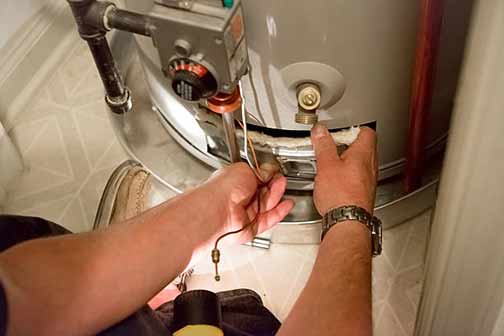
Water heater problems in your home can transform simple everyday tasks into time-draining chores. Depending on the kind of problem and time of the year, water heater issues can be a huge nuisance or a life-threatening issue, warns Peak Residential company.
But most of the time, water heater problems in your home are not half as bad as you imagine. If your water heater has not reached its use-before date and you have cared for the system properly, the issues in your water heater are probably minor.
Minor water heater problems at home do not need the attention of an expert. With some guidance, you can fix them yourself. To help you save time and money and avoid stress the next time your water heater misbehaves, here are five common water heater issues you can fix yourself.
No hot water
If the water heater isn’t heating water, it could be disconnected from power, or the circuit breaker may have tripped. It could also be because at least one of its heating elements has failed. You can fix the first two problems by yourself, but the third one—a failed heating element—should be handled by a professional.
To fix the problem, go to the service panel and check if the water heater circuit breaker is in the OFF position. If it is, push it back to the ON position. If the breaker did not trip and the water heater is connected to power, reset the high-temperature limit on the unit. Make sure to turn off the water heater at the service panel before you do this.
The water is not hot enough
If your water heater is delivering insufficient hot water, there are two possible causes. It is either because one or more heating elements are damaged or sediments have built up at the bottom of the tank. A damaged heating element is not something you can fix by yourself.
If the problem is due to excessive buildup inside the tank, you can flush the tank to get rid of the sediment. Flushing a water heater tank is not hard. All you need is a wrench, flathead screwdriver, hose, plastic bucket, patience, and a lot of time. A simple Google search will show you how to flush your water heater tank.
Water Is too hot
Excessively hot water from a water heater can cause serious injury. Usually, this problem happens when the thermostat is set too high. Too much buildup inside the water heater tank can also cause overheating.
To adjust the heating settings on your water heater, turn off the unit and remove the access panel. Check to see that the setting is not higher than 120F°. If it is, use a flathead screwdriver to adjust the thermostat to your desired setting. Do not forget to turn the power back on after you replace the access panel.
The water heater is leaking
Depending on the source of the leak, this is a problem you can DIY or an unfixable problem. If the leak is from a loose connection, maybe an inlet pipe, you can solve it using a wrench to tighten the offending pipe. The same solution applies to a leaking outlet pipe. Remember to turn off the water supply before doing this.
A water heater can also leak from the TPR valve. A leaky TPR valve should be replaced. To replace the valve, turn off the power to the unit and close the cold water supply valve. Open the TPR valve to drain it before unscrewing the valve with a wrench. Insert the new valve (don’t forget to use plumber’s tape).
If the leak is from the sides of the water heater tank, your water heater tank is probably cracked or holed because of corrosion and other problems. You cannot safely repair a damaged water heater tank. The best option is to replace the water heater.
The water heater is noisy
A noisy water – popping or low rumbling sounds and a high-pitched whine – means the water inside the tank is boiling. Excessive sediments at the bottom of the tank will cause this problem. Once again, the way to fix this is to flush the tank.
Condensation
If your water heater has a condensation problem, it is easy to mistake it for a leak. The difference between condensation and leaks is that condensation is usually present across the entire surface of the tank. However, leaks are localized.
If the overall surface of the tank is wet, you may have condensation issues. Condensation can damage your flooring and encourage rusting. This problem can be fixed by setting the thermostat between 115F° and 120F°.
Finally, it is essential to know when to call an expert. Contact a professional if the recommended solutions for the above problems fail. If your home’s water heater problem is not on this list, you are better off letting an expert replace the water heater entirely.

